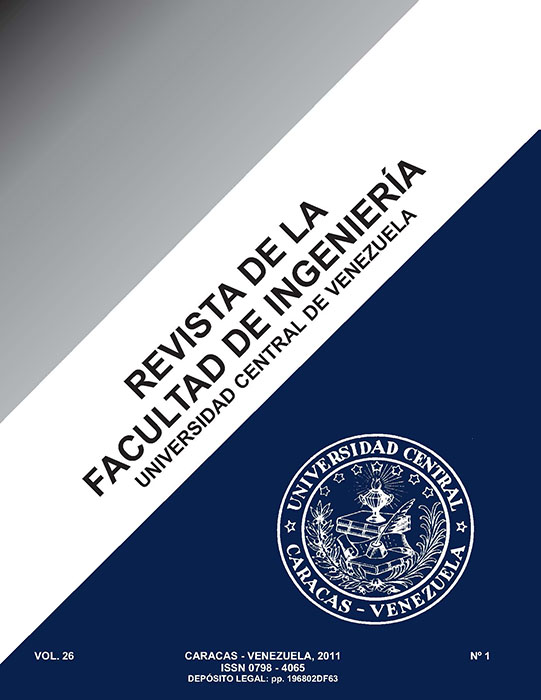MODIFICACIÓN QUÍMICA DE ALMIDÓN DE YUCA NATIVO MEDIANTE LA REACCIÓN DE CARBOXIMETILACIÓN EN MEDIO ACUOSO / Chemical Modification of Cassava Starch by Carboxymethylation Reaction in Aqueous Media
Mots-clés :
Almidón, Carboximetilación, Carboximetil almidón, Ácido monocloroacético, Propiedades reológicas.Résumé
En este trabajo se realizó un estudio de la carboximetilación del almidón de yuca en medio acuoso empleando ácido monocloroacético (AMCA) como agente modificante. Todas las variables que afectan el proceso de modificación química se investigaron de manera sistemática. Las cinco variables de reacción seleccionadas fueron: tiempo de activación, temperatura de activación, tiempo de reacción, relación almidón/solvente (% p/v) y relación molar entre reactivos: agente activante, agente modificante y unidades anhidroglucosa (NaOH:AMCA:UAG). Estas variables se analizaron a fin de optimizar las condiciones de reacción, que dan lugar a los mayores grados de sustitución (GS) y a los más altos valores de viscosidad en soluciones acuosas. Esto representa una aproximación novedosa a la modificación química del almidón pues balancea el grado de sustitución obtenido con la minimización de la degradación química durante la reacción. Se pudo observar que si bien factores como el aumento de la temperatura y del tiempo favorecen un mayor GS, también reducen los valores de viscosidad. Las condiciones que conducen a productos con las mayores viscosidades son una concentración de 5% de almidón/H2O, 50 ºC como temperatura de activación, 2 horas de activación, 3 horas de reacción y una relación molar entre reactivos igual a 2:1:1 (NaOH:AMCA:UAG). El valor máximo de viscosidad a bajas tasas de corte obtenido fue de 0,26 Pa•s cuando se midió en una solución salina al 3% p/p del almidón modificado y 0,1 M de NaCl.
ABSTRACT
In this work, a study was performed on the carboxymethylation of cassava starch in aqueous media by employing monochloroacetic acid as the modification reagent. All the variables that can affect the process of chemical modification were systematically studied. The five selected reaction variables were: activation time, activation temperature, starch/solvent ratio (w/v %) and the molar ratio between the following reactants: activating agent:modifying agent:anhydroglucose units (NaOH:MCAA:AGU). These variables were analyzed with the aim of optimizing the reaction conditions which could yield the highest degrees of substitution (DS) and the highest viscosity values in aqueous solution. This represents a novel approach to the chemical modification of starch since it balances the degree of substitution obtained with the minimization of chemical degradation during the reaction. It was observed that even though factors like temperature increases or longer reaction times favored higher DS values, they also lead to viscosity reductions. The conditions that yield the products with the highest viscosities are: a starch concentration of 5% in water, 50 ºC as activation temperature, 2 hours of activation, 3 hours of reaction and a molar relationship between reactants equal to 2:1:1 (NaOH:MCAA:AGU). The maximum viscosity value at low shear rates obtained was 0.26 Pa.s when it was measured in a saline solution at 3% w/w of modified starch and 0.1 M of NaCl.
Keywords: Starch, Carboxymethylation, Carboxymethyl starch, Monochloroacetic acid, Rheological properties.



